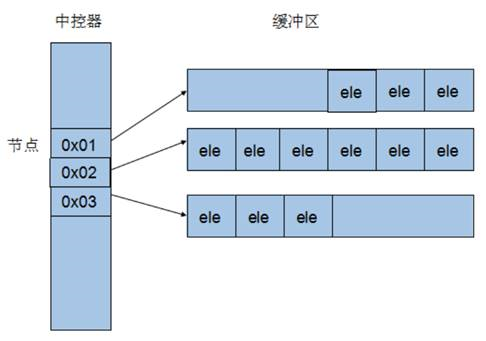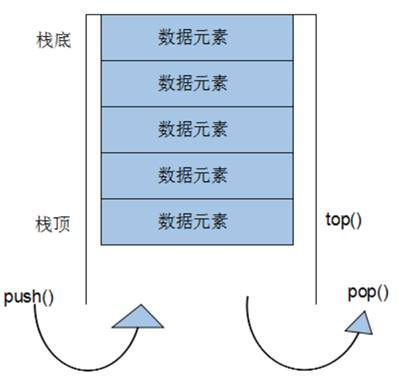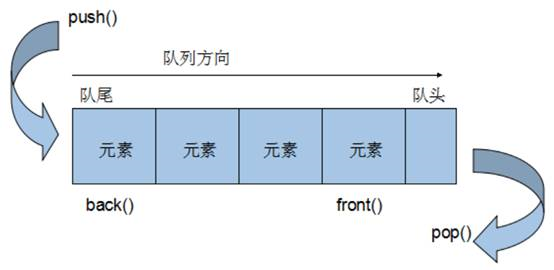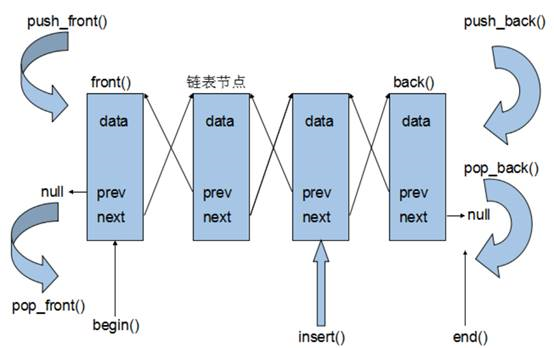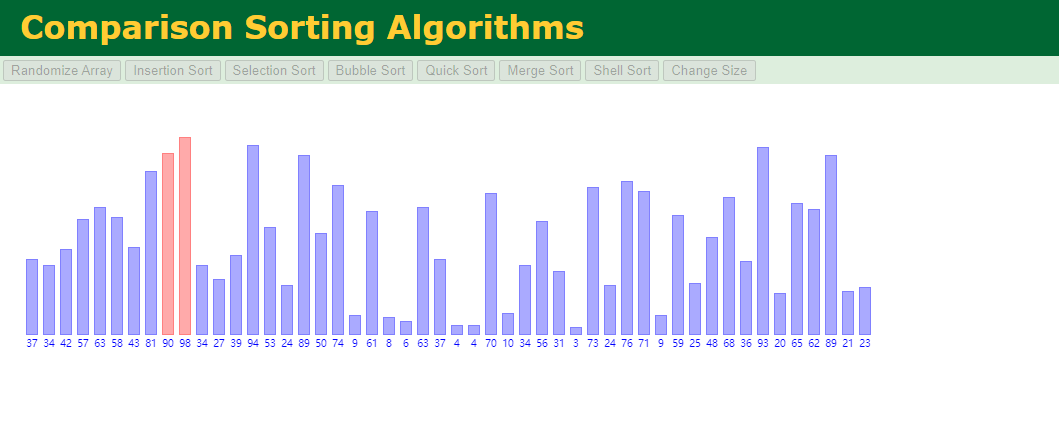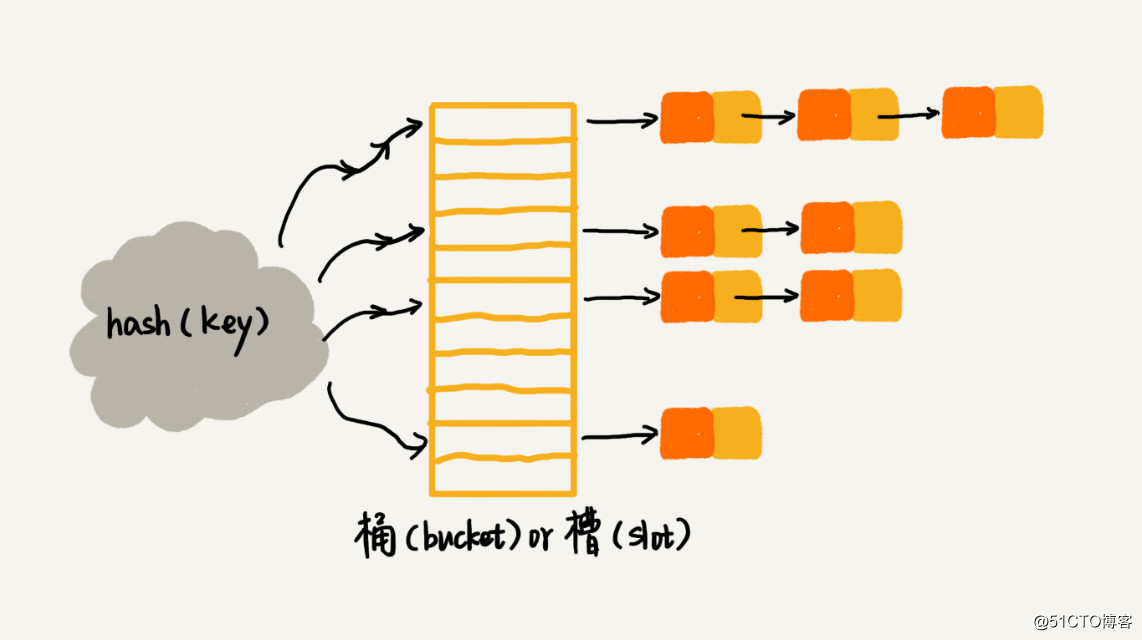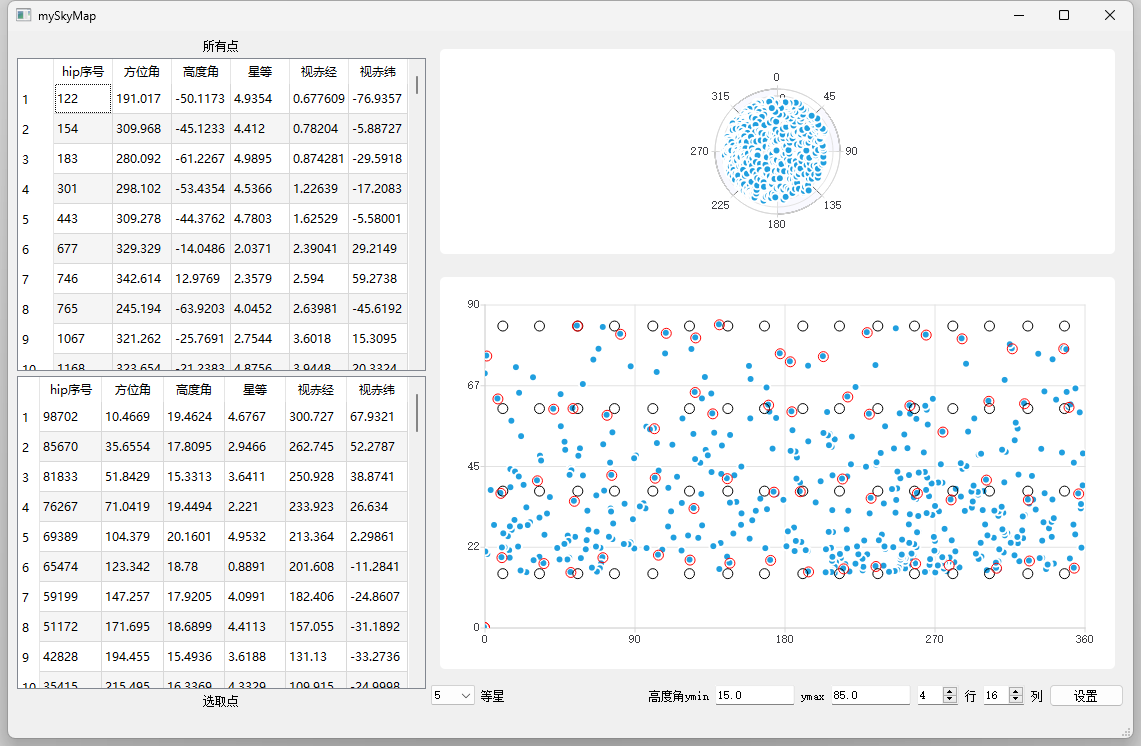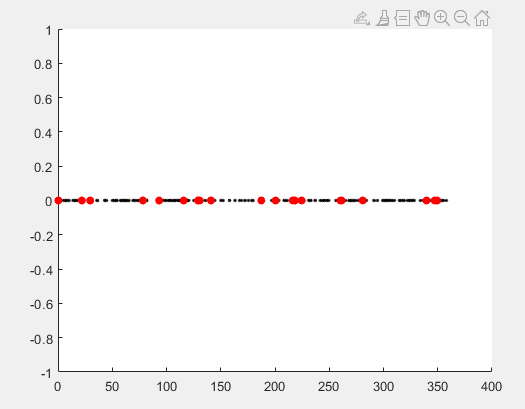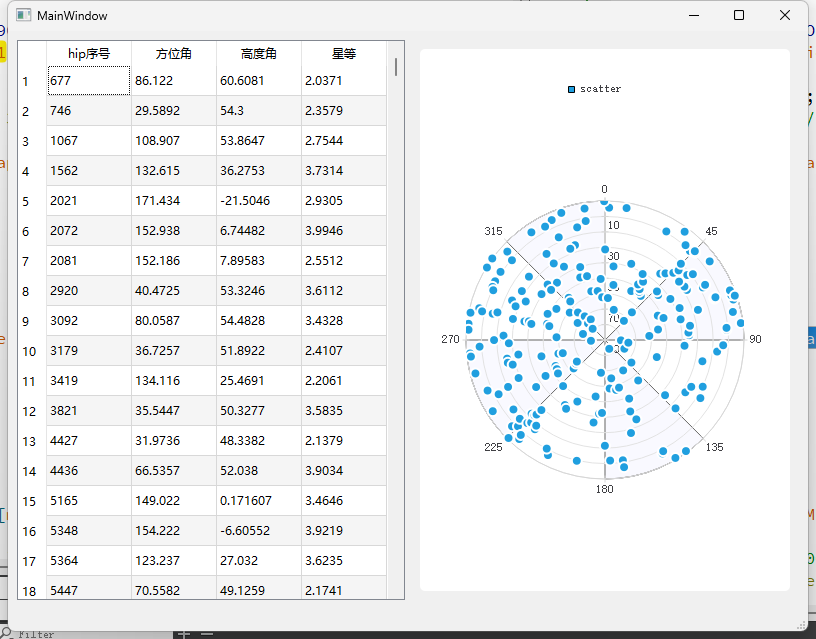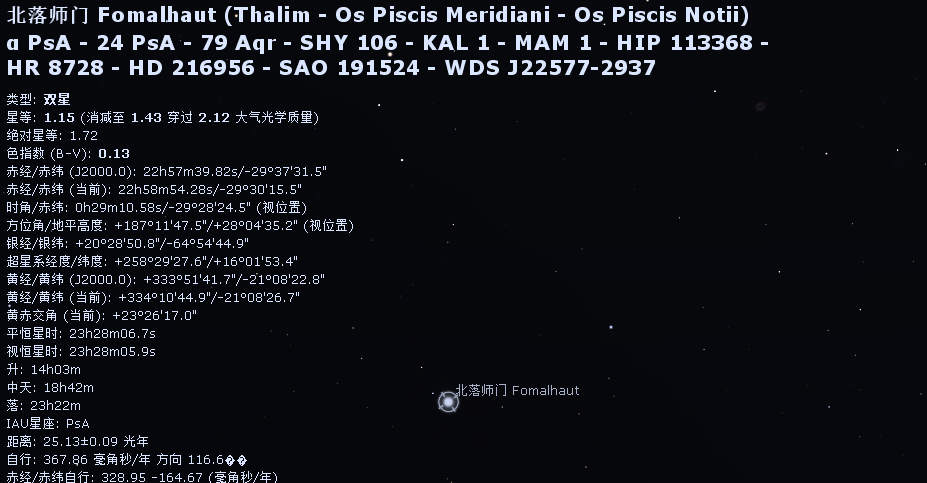2 STL初识 2.1 STL的诞生
2.2 STL基本概念
STL(Standard Template Library,标准模板库 )
STL 从广义上分为: 容器(container) 算法(algorithm) 迭代器(iterator)
容器 和算法 之间通过迭代器 进行无缝连接。STL 几乎所有的代码都采用了模板类或者模板函数
2.3 STL六大组件 STL大体分为六大组件,分别是:容器、算法、迭代器、仿函数、适配器(配接器)、空间配置器
容器:各种数据结构,如vector、list、deque、set、map等,用来存放数据。
算法:各种常用的算法,如sort、find、copy、for_each等
迭代器:扮演了容器与算法之间的胶合剂。
仿函数:行为类似函数,可作为算法的某种策略。
适配器:一种用来修饰容器或者仿函数或迭代器接口的东西。
空间配置器:负责空间的配置与管理。
2.4 STL中容器、算法、迭代器 容器: 置物之所也
STL容器 就是将运用最广泛的一些数据结构 实现出来
常用的数据结构:数组, 链表,树, 栈, 队列, 集合, 映射表 等
这些容器分为序列式容器 和关联式容器 两种:
序列式容器 :强调值的排序,序列式容器中的每个元素均有固定的位置。 13542关联式容器 :二叉树结构,各元素之间没有严格的物理上的顺序关系 12345
算法: 问题之解法也
有限的步骤,解决逻辑或数学上的问题,这一门学科我们叫做算法(Algorithms)
算法分为:质变算法 和非质变算法 。
质变算法:是指运算过程中会更改区间内的元素的内容。例如拷贝,替换,删除等等
非质变算法:是指运算过程中不会更改区间内的元素内容,例如查找、计数、遍历、寻找极值等等
迭代器: 容器和算法之间粘合剂
提供一种方法,使之能够依序寻访某个容器所含的各个元素,而又无需暴露该容器的内部表示方式。
每个容器都有自己专属的迭代器
迭代器使用非常类似于指针,初学阶段我们可以先理解迭代器为指针
迭代器种类:
种类
功能
支持运算
输入迭代器
对数据的只读访问
只读,支持++、==、!=
输出迭代器
对数据的只写访问
只写,支持++
前向迭代器
读写操作,并能向前推进迭代器
读写,支持++、==、!=
双向迭代器
读写操作,并能向前和向后操作
读写,支持++、—,
随机访问迭代器
读写操作,可以以跳跃的方式访问任意数据,功能最强的迭代器
读写,支持++、—、[n]、-n、<、<=、>、>=
常用的容器中迭代器种类为双向迭代器,和随机访问迭代器
2.5 容器算法迭代器初识 了解STL中容器、算法、迭代器概念之后,我们利用代码感受STL的魅力
STL中最常用的容器为Vector,可以理解为数组,下面我们将学习如何向这个容器中插入数据、并遍历这个容器
2.5.1 vector存放内置数据类型 容器: vector
算法: for_each
迭代器: vector<int>::iterator
示例:
#include <vector> #include <algorithm> void MyPrint (int val) cout << val << endl ; } void test01 () vector <int > v; v.push_back(10 ); v.push_back(20 ); v.push_back(30 ); v.push_back(40 ); vector <int >::iterator pBegin = v.begin(); vector <int >::iterator pEnd = v.end(); while (pBegin != pEnd) { cout << *pBegin << endl ; pBegin++; } for (vector <int >::iterator it = v.begin(); it != v.end(); it++) { cout << *it << endl ; } cout << endl ; for_each(v.begin(), v.end(), MyPrint); } int main () test01(); system("pause" ); return 0 ; }
2.5.2 Vector存放自定义数据类型 学习目标:vector中存放自定义数据类型,并打印输出
示例:
#include <vector> #include <string> class Person {public : Person(string name, int age) { mName = name; mAge = age; } public : string mName; int mAge; }; void test01 () vector <Person> v; Person p1 ("aaa" , 10 ) ; Person p2 ("bbb" , 20 ) ; Person p3 ("ccc" , 30 ) ; Person p4 ("ddd" , 40 ) ; Person p5 ("eee" , 50 ) ; v.push_back(p1); v.push_back(p2); v.push_back(p3); v.push_back(p4); v.push_back(p5); for (vector <Person>::iterator it = v.begin(); it != v.end(); it++) { cout << "Name:" << (*it).mName << " Age:" << (*it).mAge << endl ; } } void test02 () vector <Person*> v; Person p1 ("aaa" , 10 ) ; Person p2 ("bbb" , 20 ) ; Person p3 ("ccc" , 30 ) ; Person p4 ("ddd" , 40 ) ; Person p5 ("eee" , 50 ) ; v.push_back(&p1); v.push_back(&p2); v.push_back(&p3); v.push_back(&p4); v.push_back(&p5); for (vector <Person*>::iterator it = v.begin(); it != v.end(); it++) { Person * p = (*it); cout << "Name:" << p->mName << " Age:" << (*it)->mAge << endl ; } } int main () test01(); test02(); system("pause" ); return 0 ; }
2.5.3 Vector容器嵌套容器 学习目标:容器中嵌套容器,我们将所有数据进行遍历输出
示例:
#include <vector> void test01 () vector < vector <int > > v; vector <int > v1; vector <int > v2; vector <int > v3; vector <int > v4; for (int i = 0 ; i < 4 ; i++) { v1.push_back(i + 1 ); v2.push_back(i + 2 ); v3.push_back(i + 3 ); v4.push_back(i + 4 ); } v.push_back(v1); v.push_back(v2); v.push_back(v3); v.push_back(v4); for (vector <vector <int >>::iterator it = v.begin(); it != v.end(); it++) { for (vector <int >::iterator vit = (*it).begin(); vit != (*it).end(); vit++) { cout << *vit << " " ; } cout << endl ; } } int main () test01(); system("pause" ); return 0 ; }
3 STL- 常用容器 3.1 string容器 3.1.1 string基本概念 本质:
string是C++风格的字符串,而string本质上是一个类
string和char * 区别:
char * 是一个指针
string是一个类,类内部封装了char*,管理这个字符串,是一个char*型的容器。
特点:
string 类内部封装了很多成员方法
例如:查找find,拷贝copy,删除delete 替换replace,插入insert
string管理char*所分配的内存,不用担心复制越界和取值越界等,由类内部进行负责
3.1.2 string构造函数 构造函数原型:
string(); //创建一个空的字符串 例如: string str;string(const char* s); //使用字符串s初始化string(const string& str); //使用一个string对象初始化另一个string对象,拷贝构造函数string(int n, char c); //使用n个字符c初始化
示例:
#include <string> void test01 () cout << "str1 = " << s1 << endl ; const char * str = "hello world" ; string s2 (str) cout << "str2 = " << s2 << endl ; string s3 (s2) cout << "str3 = " << s3 << endl ; string s4 (10 , 'a' ) cout << "str3 = " << s3 << endl ; } int main () test01(); system("pause" ); return 0 ; }
总结:string的多种构造方式没有可比性,灵活使用即可
3.1.3 string赋值操作 功能描述:
赋值的函数原型:
string& operator=(const char* s); //char*类型字符串 赋值给当前的字符串string& operator=(const string &s); //把字符串s赋给当前的字符串string& operator=(char c); //字符赋值给当前的字符串string& assign(const char *s); //把字符串s赋给当前的字符串string& assign(const char *s, int n); //把字符串s的前n个字符赋给当前的字符串string& assign(const string &s); //把字符串s赋给当前字符串string& assign(int n, char c); //用n个字符c赋给当前字符串
示例:
void test01 () string str1; str1 = "hello world" ; cout << "str1 = " << str1 << endl ; string str2; str2 = str1; cout << "str2 = " << str2 << endl ; string str3; str3 = 'a' ; cout << "str3 = " << str3 << endl ; string str4; str4.assign("hello c++" ); cout << "str4 = " << str4 << endl ; string str5; str5.assign("hello c++" ,5 ); cout << "str5 = " << str5 << endl ; string str6; str6.assign(str5); cout << "str6 = " << str6 << endl ; string str7; str7.assign(5 , 'x' ); cout << "str7 = " << str7 << endl ; } int main () test01(); system("pause" ); return 0 ; }
总结:
string的赋值方式很多,operator = 这种方式是比较实用的
3.1.4 string字符串拼接 功能描述:
函数原型:
string& operator += (const char* str); //重载+=操作符string& operator += (const char c); //重载+=操作符string& operator += (const string& str); //重载+=操作符string& append(const char *s); //把字符串s连接到当前字符串结尾string& append(const char *s, int n); //把字符串s的前n个字符连接到当前字符串结尾string& append(const string &s); //同operator+=(const string& str)string& append(const string &s, int pos, int n);//字符串s中从pos开始的n个字符连接到字符串结尾
示例:
void test01 () string str1 = "我" ; str1 += "爱玩游戏" ; cout << "str1 = " << str1 << endl ; str1 += ':' ; cout << "str1 = " << str1 << endl ; string str2 = "LOL DNF" ; str1 += str2; cout << "str1 = " << str1 << endl ; string str3 = "I" ; str3.append(" love " ); str3.append("game abcde" , 4 ); str3.append(str2, 4 , 3 ); cout << "str3 = " << str3 << endl ; } int main () test01(); system("pause" ); return 0 ; }
总结:字符串拼接的重载版本很多,初学阶段记住几种即可
3.1.5 string查找和替换 功能描述:
查找:查找指定字符串是否存在
替换:在指定的位置替换字符串
函数原型:
int find(const string& str, int pos = 0) const; //查找str第一次出现位置,从pos开始查找,查不到返回-1int find(const char* s, int pos = 0) const; //查找s第一次出现位置,从pos开始查找int find(const char* s, int pos, int n) const; //从pos位置查找s的前n个字符第一次位置int find(const char c, int pos = 0) const; //查找字符c第一次出现位置int rfind(const string& str, int pos = npos) const; //查找str最后一次位置,从pos开始查找int rfind(const char* s, int pos = npos) const; //查找s最后一次出现位置,从pos开始查找int rfind(const char* s, int pos, int n) const; //从pos查找s的前n个字符最后一次位置int rfind(const char c, int pos = 0) const; //查找字符c最后一次出现位置string& replace(int pos, int n, const string& str); //替换从pos开始n个字符为字符串strstring& replace(int pos, int n,const char* s); //替换从pos开始的n个字符为字符串s
示例:
void test01 () string str1 = "abcdefgde" ; int pos = str1.find("de" ); if (pos == -1 ) { cout << "未找到" << endl ; } else { cout << "pos = " << pos << endl ; } pos = str1.rfind("de" ); cout << "pos = " << pos << endl ; } void test02 () string str1 = "abcdefgde" ; str1.replace(1 , 3 , "1111" ); cout << "str1 = " << str1 << endl ; } int main () system("pause" ); return 0 ; }
总结:
find查找是从左往后,rfind从右往左
find找到字符串后返回查找的第一个字符位置,找不到返回-1
replace在替换时,要指定从哪个位置起,多少个字符,替换成什么样的字符串
3.1.6 string字符串比较 功能描述:
比较方式:
= 返回 0
> 返回 1
< 返回 -1
函数原型:
int compare(const string &s) const; //与字符串s比较int compare(const char *s) const; //与字符串s比较
示例:
void test01 () string s1 = "hello" ; string s2 = "aello" ; int ret = s1.compare(s2); if (ret == 0 ) { cout << "s1 等于 s2" << endl ; } else if (ret > 0 ) { cout << "s1 大于 s2" << endl ; } else { cout << "s1 小于 s2" << endl ; } } int main () test01(); system("pause" ); return 0 ; }
总结:字符串对比主要是用于比较两个字符串是否相等,判断谁大谁小的意义并不是很大
3.1.7 string字符存取 string中单个字符存取方式有两种
char& operator[](int n); //通过[]方式取字符char& at(int n); //通过at方法获取字符
示例:
void test01 () string str = "hello world" ; for (int i = 0 ; i < str.size(); i++) { cout << str[i] << " " ; } cout << endl ; for (int i = 0 ; i < str.size(); i++) { cout << str.at(i) << " " ; } cout << endl ; str[0 ] = 'x' ; str.at(1 ) = 'x' ; cout << str << endl ; } int main () test01(); system("pause" ); return 0 ; }
总结:string字符串中单个字符存取有两种方式,利用 [ ] 或 at
3.1.8 string插入和删除 功能描述:
函数原型:
string& insert(int pos, const char* s); //插入字符串string& insert(int pos, const string& str); //插入字符串string& insert(int pos, int n, char c); //在指定位置插入n个字符cstring& erase(int pos, int n = npos); //删除从Pos开始的n个字符
示例:
void test01 () string str = "hello" ; str.insert(1 , "111" ); cout << str << endl ; str.erase(1 , 3 ); cout << str << endl ; } int main () test01(); system("pause" ); return 0 ; }
总结: 插入和删除的起始下标都是从0开始
3.1.9 string子串 功能描述:
函数原型:
string substr(int pos = 0, int n = npos) const; //返回由pos开始的n个字符组成的字符串
示例:
void test01 () string str = "abcdefg" ; string subStr = str.substr(1 , 3 ); cout << "subStr = " << subStr << endl ; string email = "hello@sina.com" ; int pos = email.find("@" ); string username = email.substr(0 , pos); cout << "username: " << username << endl ; } int main () test01(); system("pause" ); return 0 ; }
总结: 灵活的运用求子串功能,可以在实际开发中获取有效的信息
3.2 vector容器 3.2.1 vector基本概念 功能:
vector数据结构和数组非常相似 ,也称为单端数组
vector与普通数组区别:
不同之处在于数组是静态空间,而vector可以动态扩展
动态扩展:
并不是在原空间之后续接新空间,而是找更大的内存空间,然后将原数据拷贝新空间,释放原空间
vector容器的迭代器是支持随机访问的迭代器
3.2.2 vector构造函数 功能描述:
函数原型:
vector<T> v; //采用模板实现类实现,默认构造函数vector(v.begin(), v.end()); //将v[begin(), end())区间(前闭后开)中的元素拷贝给本身。vector(n, elem); //构造函数将n个elem拷贝给本身。vector(n); // 创建一个大小为n的向量。vector(const vector &vec); //拷贝构造函数。
示例:
#include <vector> void printVector (vector <int >& v) for (vector <int >::iterator it = v.begin(); it != v.end(); it++) { cout << *it << " " ; } cout << endl ; } void test01 () vector <int > v1; for (int i = 0 ; i < 10 ; i++) { v1.push_back(i); } printVector(v1); vector <int > v2 (v1.begin(), v1.end()) printVector(v2); vector <int > v3 (10 , 100 ) printVector(v3); vector <int > v4 (v3) printVector(v4); } int main () test01(); system("pause" ); return 0 ; }
总结: vector的多种构造方式没有可比性,灵活使用即可
3.2.3 vector赋值操作 功能描述:
函数原型:
vector& operator= (const vector &vec);//重载等号操作符
assign(beg, end); //将[beg, end)区间中的数据拷贝赋值给本身。(前闭后开)assign(n, elem); //将n个elem拷贝赋值给本身。
示例:
#include <vector> void printVector (vector <int >& v) for (vector <int >::iterator it = v.begin(); it != v.end(); it++) { cout << *it << " " ; } cout << endl ; } void test01 () vector <int > v1; for (int i = 0 ; i < 10 ; i++) { v1.push_back(i); } printVector(v1); vector <int >v2; v2 = v1; printVector(v2); vector <int >v3; v3.assign(v1.begin(), v1.end()); printVector(v3); vector <int >v4; v4.assign(10 , 100 ); printVector(v4); } int main () test01(); system("pause" ); return 0 ; }
总结: vector赋值方式比较简单,使用operator=,或者assign都可以
3.2.4 vector容量和大小 功能描述:
函数原型:
empty(); //判断容器是否为空
capacity(); //容器的容量
size(); //返回容器中元素的个数
resize(int num); //重新指定容器的长度为num,若容器变长,则以默认值填充新位置。
//如果容器变短,则末尾超出容器长度的元素被删除。
resize(int num, elem); //重新指定容器的长度为num,若容器变长,则以elem值填充新位置。
//如果容器变短,则末尾超出容器长度的元素被删除
示例:
#include <vector> void printVector (vector <int >& v) for (vector <int >::iterator it = v.begin(); it != v.end(); it++) { cout << *it << " " ; } cout << endl ; } void test01 () vector <int > v1; for (int i = 0 ; i < 10 ; i++) { v1.push_back(i); } printVector(v1); if (v1.empty()) { cout << "v1为空" << endl ; } else { cout << "v1不为空" << endl ; cout << "v1的容量 = " << v1.capacity() << endl ; cout << "v1的大小 = " << v1.size() << endl ; } v1.resize(15 ,10 ); printVector(v1); v1.resize(5 ); printVector(v1); } int main () test01(); system("pause" ); return 0 ; }
总结:
判断是否为空 —- empty
返回元素个数 —- size
返回容器容量 —- capacity
重新指定大小 —- resize
3.2.5 vector插入和删除 功能描述:
函数原型:
push_back(ele); //尾部插入元素elepop_back(); //删除最后一个元素insert(const_iterator pos, ele); //迭代器指向位置pos插入元素eleinsert(const_iterator pos, int count,ele);//迭代器指向位置pos插入count个元素eleerase(const_iterator pos); //删除迭代器指向的元素erase(const_iterator start, const_iterator end);//删除迭代器从start到end之间的元素clear(); //删除容器中所有元素
示例:
#include <vector> void printVector (vector <int >& v) for (vector <int >::iterator it = v.begin(); it != v.end(); it++) { cout << *it << " " ; } cout << endl ; } void test01 () vector <int > v1; v1.push_back(10 ); v1.push_back(20 ); v1.push_back(30 ); v1.push_back(40 ); v1.push_back(50 ); printVector(v1); v1.pop_back(); printVector(v1); v1.insert(v1.begin(), 100 ); printVector(v1); v1.insert(v1.begin(), 2 , 1000 ); printVector(v1); v1.erase(v1.begin()); printVector(v1); v1.erase(v1.begin(), v1.end()); v1.clear(); printVector(v1); } int main () test01(); system("pause" ); return 0 ; }
总结:
尾插 —- push_back
尾删 —- pop_back
插入 —- insert (位置迭代器)
删除 —- erase (位置迭代器)
清空 —- clear
3.2.6 vector数据存取 功能描述:
函数原型:
at(int idx); //返回索引idx所指的数据operator[]; //返回索引idx所指的数据front(); //返回容器中第一个数据元素back(); //返回容器中最后一个数据元素
示例:
#include <vector> void test01 () vector <int >v1; for (int i = 0 ; i < 10 ; i++) { v1.push_back(i); } for (int i = 0 ; i < v1.size(); i++) { cout << v1[i] << " " ; } cout << endl ; for (int i = 0 ; i < v1.size(); i++) { cout << v1.at(i) << " " ; } cout << endl ; cout << "v1的第一个元素为: " << v1.front() << endl ; cout << "v1的最后一个元素为: " << v1.back() << endl ; } int main () test01(); system("pause" ); return 0 ; }
总结:
除了用迭代器获取vector容器中元素,[ ]和at也可以
front返回容器第一个元素
back返回容器最后一个元素
3.2.7 vector互换容器 功能描述:
函数原型:
swap(vec); // 将vec与本身的元素互换
示例:
#include <vector> void printVector (vector <int >& v) for (vector <int >::iterator it = v.begin(); it != v.end(); it++) { cout << *it << " " ; } cout << endl ; } void test01 () vector <int > v1; for (int i = 0 ; i < 10 ; i++) { v1.push_back(i); } printVector(v1); vector <int >v2; for (int i = 10 ; i > 0 ; i--) { v2.push_back(i); } printVector(v2); cout << "互换后" << endl ; v1.swap(v2); printVector(v1); printVector(v2); } void test02 () vector <int > v; for (int i = 0 ; i < 100000 ; i++) { v.push_back(i); } cout << "v的容量为:" << v.capacity() << endl ; cout << "v的大小为:" << v.size() << endl ; v.resize(3 ); cout << "v的容量为:" << v.capacity() << endl ; cout << "v的大小为:" << v.size() << endl ; vector <int >(v).swap(v); cout << "v的容量为:" << v.capacity() << endl ; cout << "v的大小为:" << v.size() << endl ; } int main () test01(); test02(); system("pause" ); return 0 ; }
总结:swap可以使两个容器互换,可以达到实用的收缩内存效果
3.2.8 vector预留空间 功能描述:
函数原型:
reserve(int len);//容器预留len个元素长度,预留位置不初始化,元素不可访问。
示例:
#include <vector> void test01 () vector <int > v; v.reserve(100000 ); int num = 0 ; int * p = NULL ; for (int i = 0 ; i < 100000 ; i++) { v.push_back(i); if (p != &v[0 ]) { p = &v[0 ]; num++; } } cout << "num:" << num << endl ; } int main () test01(); system("pause" ); return 0 ; }
总结:如果数据量较大,可以一开始利用reserve预留空间
3.3 deque容器 3.3.1 deque容器基本概念 double-ended queue
功能:
deque与vector区别:
vector对于头部的插入删除效率低,数据量越大,效率越低
deque相对而言,对头部的插入删除速度回比vector快
vector访问元素时的速度会比deque快,这和两者内部实现有关
deque内部工作原理:
deque内部有个中控器 ,维护每段缓冲区中的内容,缓冲区中存放真实数据
中控器维护的是每个缓冲区的地址,使得使用deque时像一片连续的内存空间
3.3.2 deque构造函数 功能描述:
函数原型:
deque<T> deqT; //默认构造形式deque(beg, end); //构造函数将[beg, end)区间中的元素拷贝给本身。deque(n, elem); //构造函数将n个elem拷贝给本身。deque(const deque &deq); //拷贝构造函数
示例:
#include <deque> void printDeque (const deque <int >& d) for (deque <int >::const_iterator it = d.begin(); it != d.end(); it++) { cout << *it << " " ; } cout << endl ; } void test01 () deque <int > d1; for (int i = 0 ; i < 10 ; i++) { d1.push_back(i); } printDeque(d1); deque <int > d2 (d1.begin(),d1.end()) printDeque(d2); deque <int > d3 (10 ,100 ) printDeque(d3); deque <int > d4 = d3; printDeque(d4); } int main () test01(); system("pause" ); return 0 ; }
总结: deque容器和vector容器的构造方式几乎一致,灵活使用即可
3.3.3 deque赋值操作 功能描述:
函数原型:
deque& operator=(const deque &deq); //重载等号操作符
assign(beg, end); //将[beg, end)区间中的数据拷贝赋值给本身。assign(n, elem); //将n个elem拷贝赋值给本身。
示例:
#include <deque> void printDeque (const deque <int >& d) for (deque <int >::const_iterator it = d.begin(); it != d.end(); it++) { cout << *it << " " ; } cout << endl ; } void test01 () deque <int > d1; for (int i = 0 ; i < 10 ; i++) { d1.push_back(i); } printDeque(d1); deque <int >d2; d2 = d1; printDeque(d2); deque <int >d3; d3.assign(d1.begin(), d1.end()); printDeque(d3); deque <int >d4; d4.assign(10 , 100 ); printDeque(d4); } int main () test01(); system("pause" ); return 0 ; }
总结:deque赋值操作也与vector相同,需熟练掌握
3.3.4 deque大小操作 功能描述:
函数原型:
deque.empty(); //判断容器是否为空
deque.size(); //返回容器中元素的个数
deque.resize(num); //重新指定容器的长度为num,若容器变长,则以默认值填充新位置。
//如果容器变短,则末尾超出容器长度的元素被删除。
deque.resize(num, elem); //重新指定容器的长度为num,若容器变长,则以elem值填充新位置。
//如果容器变短,则末尾超出容器长度的元素被删除。
示例:
#include <deque> void printDeque (const deque <int >& d) for (deque <int >::const_iterator it = d.begin(); it != d.end(); it++) { cout << *it << " " ; } cout << endl ; } void test01 () deque <int > d1; for (int i = 0 ; i < 10 ; i++) { d1.push_back(i); } printDeque(d1); if (d1.empty()) { cout << "d1为空!" << endl ; } else { cout << "d1不为空!" << endl ; cout << "d1的大小为:" << d1.size() << endl ; } d1.resize(15 , 1 ); printDeque(d1); d1.resize(5 ); printDeque(d1); } int main () test01(); system("pause" ); return 0 ; }
总结:
deque没有容量的概念
判断是否为空 —- empty
返回元素个数 —- size
重新指定个数 —- resize
3.3.5 deque 插入和删除 功能描述:
函数原型:
两端插入操作:
push_back(elem); //在容器尾部添加一个数据push_front(elem); //在容器头部插入一个数据pop_back(); //删除容器最后一个数据pop_front(); //删除容器第一个数据
指定位置操作:
insert(pos,elem); //在pos位置插入一个elem元素的拷贝,返回新数据的位置。
insert(pos,n,elem); //在pos位置插入n个elem数据,无返回值。
insert(pos,beg,end); //在pos位置插入[beg,end)区间的数据,无返回值。
clear(); //清空容器的所有数据
erase(beg,end); //删除[beg,end)区间的数据,返回下一个数据的位置。
erase(pos); //删除pos位置的数据,返回下一个数据的位置。
示例:
#include <deque> void printDeque (const deque <int >& d) for (deque <int >::const_iterator it = d.begin(); it != d.end(); it++) { cout << *it << " " ; } cout << endl ; } void test01 () deque <int > d; d.push_back(10 ); d.push_back(20 ); d.push_front(100 ); d.push_front(200 ); printDeque(d); d.pop_back(); d.pop_front(); printDeque(d); } void test02 () deque <int > d; d.push_back(10 ); d.push_back(20 ); d.push_front(100 ); d.push_front(200 ); printDeque(d); d.insert(d.begin(), 1000 ); printDeque(d); d.insert(d.begin(), 2 ,10000 ); printDeque(d); deque <int >d2; d2.push_back(1 ); d2.push_back(2 ); d2.push_back(3 ); d.insert(d.begin(), d2.begin(), d2.end()); printDeque(d); } void test03 () deque <int > d; d.push_back(10 ); d.push_back(20 ); d.push_front(100 ); d.push_front(200 ); printDeque(d); d.erase(d.begin()); printDeque(d); d.erase(d.begin(), d.end()); d.clear(); printDeque(d); } int main () test03(); system("pause" ); return 0 ; }
总结:
插入和删除提供的位置是迭代器!
尾插 —- push_back
尾删 —- pop_back
头插 —- push_front
头删 —- pop_front
3.3.6 deque 数据存取 功能描述:
函数原型:
at(int idx); //返回索引idx所指的数据operator[]; //返回索引idx所指的数据front(); //返回容器中第一个数据元素back(); //返回容器中最后一个数据元素
示例:
#include <deque> void printDeque (const deque <int >& d) for (deque <int >::const_iterator it = d.begin(); it != d.end(); it++) { cout << *it << " " ; } cout << endl ; } void test01 () deque <int > d; d.push_back(10 ); d.push_back(20 ); d.push_front(100 ); d.push_front(200 ); for (int i = 0 ; i < d.size(); i++) { cout << d[i] << " " ; } cout << endl ; for (int i = 0 ; i < d.size(); i++) { cout << d.at(i) << " " ; } cout << endl ; cout << "front:" << d.front() << endl ; cout << "back:" << d.back() << endl ; } int main () test01(); system("pause" ); return 0 ; }
总结:
除了用迭代器获取deque容器中元素,[ ]和at也可以
front返回容器第一个元素
back返回容器最后一个元素
3.3.7 deque 排序 功能描述:
算法:
sort(iterator beg, iterator end) //对beg和end区间内元素进行排序
示例:
#include <deque> #include <algorithm> void printDeque (const deque <int >& d) for (deque <int >::const_iterator it = d.begin(); it != d.end(); it++) { cout << *it << " " ; } cout << endl ; } void test01 () deque <int > d; d.push_back(10 ); d.push_back(20 ); d.push_front(100 ); d.push_front(200 ); printDeque(d); sort(d.begin(), d.end()); printDeque(d); } int main () test01(); system("pause" ); return 0 ; }
总结:sort算法非常实用,使用时包含头文件 algorithm即可
3.4 案例-评委打分 3.4.1 案例描述 有5名选手:选手ABCDE,10个评委分别对每一名选手打分,去除最高分,去除评委中最低分,取平均分。
3.4.2 实现步骤
创建五名选手,放到vector中
遍历vector容器,取出来每一个选手,执行for循环,可以把10个评分打分存到deque容器中
sort算法对deque容器中分数排序,去除最高和最低分
deque容器遍历一遍,累加总分
获取平均分
示例代码:
class Person { public : Person(string name, int score) { this ->m_Name = name; this ->m_Score = score; } string m_Name; int m_Score; }; void create Person (vector <Person>&v) string nameSeed = "ABCDE" ; for (int i = 0 ; i < 5 ; i++) { string name = "选手" ; name += nameSeed[i]; int score = 0 ; Person p (name, score) ; v.push_back(p); } } void setScore (vector <Person>&v) for (vector <Person>::iterator it = v.begin(); it != v.end(); it++) { deque <int >d; for (int i = 0 ; i < 10 ; i++) { int score = rand() % 41 + 60 ; d.push_back(score); } sort(d.begin(), d.end()); d.pop_back(); d.pop_front(); int sum = 0 ; for (deque <int >::iterator dit = d.begin(); dit != d.end(); dit++) { sum += *dit; } int avg = sum / d.size(); it->m_Score = avg; } } void showScore (vector <Person>&v) for (vector <Person>::iterator it = v.begin(); it != v.end(); it++) { cout << "姓名: " << it->m_Name << " 平均分: " << it->m_Score << endl ; } } int main () srand((unsigned int )time(NULL )); vector <Person>v; createPerson(v); setScore(v); showScore(v); system("pause" ); return 0 ; }
总结: 选取不同的容器操作数据,可以提升代码的效率
3.5 stack容器 3.5.1 stack 基本概念 概念: stack是一种先进后出 (First In Last Out,FILO)的数据结构,它只有一个出口
栈中只有顶端的元素才可以被外界使用,因此栈不允许有遍历行为
栈中进入数据称为 —- 入栈 push
栈中弹出数据称为 —- 出栈 pop
3.5.2 stack 常用接口 功能描述 :栈容器常用的对外接口
构造函数 :
stack<T> stk; //stack采用模板类实现, stack对象的默认构造形式stack(const stack &stk); //拷贝构造函数
赋值操作 :
stack& operator=(const stack &stk); //重载等号操作符
数据存取 :
push(elem); //向栈顶添加元素pop(); //从栈顶移除第一个元素top(); //返回栈顶元素
大小操作 :
empty(); //判断堆栈是否为空size(); //返回栈的大小
示例:
#include <stack> void test01 () stack <int > s; s.push(10 ); s.push(20 ); s.push(30 ); while (!s.empty()) { cout << "栈顶元素为: " << s.top() << endl ; s.pop(); } cout << "栈的大小为:" << s.size() << endl ; } int main () test01(); system("pause" ); return 0 ; }
总结:
入栈 —- push
出栈 —- pop
返回栈顶 —- top
判断栈是否为空 —- empty
返回栈大小 —- size
3.6 queue 容器 3.6.1 queue 基本概念 概念: Queue是一种先进先出 (First In First Out,FIFO)的数据结构,它有两个出口
队列容器允许从一端新增元素,从另一端移除元素
队列中只有队头和队尾才可以被外界使用,因此队列不允许有遍历行为
队列中进数据称为 —- 入队 push
队列中出数据称为 —- 出队 pop
3.6.2 queue 常用接口 功能描述:栈容器常用的对外接口
构造函数:
queue<T> que; //queue采用模板类实现,queue对象的默认构造形式queue(const queue &que); //拷贝构造函数
赋值操作:
queue& operator=(const queue &que); //重载等号操作符
数据存取:
push(elem); //往队尾添加元素pop(); //从队头移除第一个元素back(); //返回最后一个元素front(); //返回第一个元素
大小操作:
empty(); //判断堆栈是否为空size(); //返回栈的大小
示例:
#include <queue> #include <string> class Person { public : Person(string name, int age) { this ->m_Name = name; this ->m_Age = age; } string m_Name; int m_Age; }; void test01 () queue <Person> q; Person p1 ("唐僧" , 30 ) ; Person p2 ("孙悟空" , 1000 ) ; Person p3 ("猪八戒" , 900 ) ; Person p4 ("沙僧" , 800 ) ; q.push(p1); q.push(p2); q.push(p3); q.push(p4); while (!q.empty()) { cout << "队头元素-- 姓名: " << q.front().m_Name << " 年龄: " << q.front().m_Age << endl ; cout << "队尾元素-- 姓名: " << q.back().m_Name << " 年龄: " << q.back().m_Age << endl ; cout << endl ; q.pop(); } cout << "队列大小为:" << q.size() << endl ; } int main () test01(); system("pause" ); return 0 ; }
总结:
入队 —- push
出队 —- pop
返回队头元素 —- front
返回队尾元素 —- back
判断队是否为空 —- empty
返回队列大小 —- size
3.7 list容器 3.7.1 list基本概念 功能: 将数据进行链式存储
链表 (list)是一种物理存储单元上非连续的存储结构,数据元素的逻辑顺序是通过链表中的指针链接实现的
链表的组成:链表由一系列结点 组成
结点的组成:一个是存储数据元素的数据域 ,另一个是存储下一个结点地址的指针域
STL中的链表是一个双向循环链表
由于链表的存储方式并不是连续的内存空间,因此链表list中的迭代器只支持前移和后移,属于双向迭代器
list的优点:
采用动态存储分配,不会造成内存浪费和溢出
链表执行插入和删除操作十分方便,修改指针即可,不需要移动大量元素
list的缺点:
链表灵活,但是空间(指针域) 和 时间(遍历)额外耗费较大
List有一个重要的性质,插入操作和删除操作都不会造成原有list迭代器的失效,这在vector是不成立的。
总结:STL中List和vector是两个最常被使用的容器 ,各有优缺点
3.7.2 list构造函数 功能描述:
函数原型:
list<T> lst; //list采用采用模板类实现,对象的默认构造形式:list(beg,end); //构造函数将[beg, end)区间中的元素拷贝给本身。list(n,elem); //构造函数将n个elem拷贝给本身。list(const list &lst); //拷贝构造函数。
示例:
#include <list> void printList (const list <int >& L) for (list <int >::const_iterator it = L.begin(); it != L.end(); it++) { cout << *it << " " ; } cout << endl ; } void test01 () list <int >L1; L1.push_back(10 ); L1.push_back(20 ); L1.push_back(30 ); L1.push_back(40 ); printList(L1); list <int >L2(L1.begin(),L1.end()); printList(L2); list <int >L3(L2); printList(L3); list <int >L4(10 , 1000 ); printList(L4); } int main () test01(); system("pause" ); return 0 ; }
总结:list构造方式同其他几个STL常用容器,熟练掌握即可
3.7.3 list 赋值和交换 功能描述:
函数原型:
assign(beg, end); //将[beg, end)区间中的数据拷贝赋值给本身。assign(n, elem); //将n个elem拷贝赋值给本身。list& operator=(const list &lst); //重载等号操作符swap(lst); //将lst与本身的元素互换。
示例:
#include <list> void printList (const list <int >& L) for (list <int >::const_iterator it = L.begin(); it != L.end(); it++) { cout << *it << " " ; } cout << endl ; } void test01 () list <int >L1; L1.push_back(10 ); L1.push_back(20 ); L1.push_back(30 ); L1.push_back(40 ); printList(L1); list <int >L2; L2 = L1; printList(L2); list <int >L3; L3.assign(L2.begin(), L2.end()); printList(L3); list <int >L4; L4.assign(10 , 100 ); printList(L4); } void test02 () list <int >L1; L1.push_back(10 ); L1.push_back(20 ); L1.push_back(30 ); L1.push_back(40 ); list <int >L2; L2.assign(10 , 100 ); cout << "交换前: " << endl ; printList(L1); printList(L2); cout << endl ; L1.swap(L2); cout << "交换后: " << endl ; printList(L1); printList(L2); } int main () test02(); system("pause" ); return 0 ; }
总结:list赋值和交换操作能够灵活运用即可
3.7.4 list 大小操作 功能描述:
函数原型:
size(); //返回容器中元素的个数
empty(); //判断容器是否为空
resize(num); //重新指定容器的长度为num,若容器变长,则以默认值填充新位置。
//如果容器变短,则末尾超出容器长度的元素被删除。
resize(num, elem); //重新指定容器的长度为num,若容器变长,则以elem值填充新位置。
//如果容器变短,则末尾超出容器长度的元素被删除。
示例:
#include <list> void printList (const list <int >& L) for (list <int >::const_iterator it = L.begin(); it != L.end(); it++) { cout << *it << " " ; } cout << endl ; } void test01 () list <int >L1; L1.push_back(10 ); L1.push_back(20 ); L1.push_back(30 ); L1.push_back(40 ); if (L1.empty()) { cout << "L1为空" << endl ; } else { cout << "L1不为空" << endl ; cout << "L1的大小为: " << L1.size() << endl ; } L1.resize(10 ); printList(L1); L1.resize(2 ); printList(L1); } int main () test01(); system("pause" ); return 0 ; }
总结:
判断是否为空 —- empty
返回元素个数 —- size
重新指定个数 —- resize
3.7.5 list 插入和删除 功能描述:
函数原型:
push_back(elem);//在容器尾部加入一个元素
pop_back();//删除容器中最后一个元素
push_front(elem);//在容器开头插入一个元素
pop_front();//从容器开头移除第一个元素
insert(pos,elem);//在pos位置插elem元素的拷贝,返回新数据的位置。
insert(pos,n,elem);//在pos位置插入n个elem数据,无返回值。
insert(pos,beg,end);//在pos位置插入[beg,end)区间的数据,无返回值。
clear();//移除容器的所有数据
erase(beg,end);//删除[beg,end)区间的数据,返回下一个数据的位置。
erase(pos);//删除pos位置的数据,返回下一个数据的位置。
remove(elem);//删除容器中所有与elem值匹配的元素。
示例:
#include <list> void printList (const list <int >& L) for (list <int >::const_iterator it = L.begin(); it != L.end(); it++) { cout << *it << " " ; } cout << endl ; } void test01 () list <int > L; L.push_back(10 ); L.push_back(20 ); L.push_back(30 ); L.push_front(100 ); L.push_front(200 ); L.push_front(300 ); printList(L); L.pop_back(); printList(L); L.pop_front(); printList(L); list <int >::iterator it = L.begin(); L.insert(++it, 1000 ); printList(L); it = L.begin(); L.erase(++it); printList(L); L.push_back(10000 ); L.push_back(10000 ); L.push_back(10000 ); printList(L); L.remove(10000 ); printList(L); L.clear(); printList(L); } int main () test01(); system("pause" ); return 0 ; }
总结:
尾插 —- push_back
尾删 —- pop_back
头插 —- push_front
头删 —- pop_front
插入 —- insert
删除 —- erase
移除 —- remove
清空 —- clear
3.7.6 list 数据存取 功能描述:
函数原型:
front(); //返回第一个元素。back(); //返回最后一个元素。
示例:
#include <list> void test01 () list <int >L1; L1.push_back(10 ); L1.push_back(20 ); L1.push_back(30 ); L1.push_back(40 ); cout << "第一个元素为: " << L1.front() << endl ; cout << "最后一个元素为: " << L1.back() << endl ; list <int >::iterator it = L1.begin(); } int main () test01(); system("pause" ); return 0 ; }
总结:
list容器中不可以通过[]或者at方式访问数据
返回第一个元素 —- front
返回最后一个元素 —- back
3.7.7 list 反转和排序 功能描述:
函数原型:
reverse(); //反转链表sort(); //链表排序
示例:
void printList (const list <int >& L) for (list <int >::const_iterator it = L.begin(); it != L.end(); it++) { cout << *it << " " ; } cout << endl ; } bool myCompare (int val1 , int val2) return val1 > val2; } void test01 () list <int > L; L.push_back(90 ); L.push_back(30 ); L.push_back(20 ); L.push_back(70 ); printList(L); L.reverse(); printList(L); L.sort(); printList(L); L.sort(myCompare); printList(L); } int main () test01(); system("pause" ); return 0 ; }
总结:
反转 —- reverse
排序 —- sort (成员函数)
所有不支持随机访问迭代器的容器,不可以用标准算法。
3.7.8 排序案例 案例描述:将Person自定义数据类型进行排序,Person中属性有姓名、年龄、身高
排序规则:按照年龄进行升序,如果年龄相同按照身高进行降序
示例:
#include <list> #include <string> class Person {public : Person(string name, int age , int height) { m_Name = name; m_Age = age; m_Height = height; } public : string m_Name; int m_Age; int m_Height; }; bool ComparePerson (Person& p1, Person& p2) if (p1.m_Age == p2.m_Age) { return p1.m_Height > p2.m_Height; } else { return p1.m_Age < p2.m_Age; } } void test01 () list <Person> L; Person p1 ("刘备" , 35 , 175 ) ; Person p2 ("曹操" , 45 , 180 ) ; Person p3 ("孙权" , 40 , 170 ) ; Person p4 ("赵云" , 25 , 190 ) ; Person p5 ("张飞" , 35 , 160 ) ; Person p6 ("关羽" , 35 , 200 ) ; L.push_back(p1); L.push_back(p2); L.push_back(p3); L.push_back(p4); L.push_back(p5); L.push_back(p6); for (list <Person>::iterator it = L.begin(); it != L.end(); it++) { cout << "姓名: " << it->m_Name << " 年龄: " << it->m_Age << " 身高: " << it->m_Height << endl ; } cout << "---------------------------------" << endl ; L.sort(ComparePerson); for (list <Person>::iterator it = L.begin(); it != L.end(); it++) { cout << "姓名: " << it->m_Name << " 年龄: " << it->m_Age << " 身高: " << it->m_Height << endl ; } } int main () test01(); system("pause" ); return 0 ; }
总结:
对于自定义数据类型,必须要指定排序规则,否则编译器不知道如何进行排序
高级排序只是在排序规则上再进行一次逻辑规则制定,并不复杂
3.8 set/ multiset 容器 3.8.1 set基本概念 简介:
本质:
set/multiset属于关联式容器 ,底层结构是用二叉树 实现。
set和multiset区别 :
set不允许容器中有重复的元素
multiset允许容器中有重复的元素
3.8.2 set构造和赋值 功能描述:创建set容器以及赋值
构造:
set<T> st; //默认构造函数:set(const set &st); //拷贝构造函数
赋值:
set& operator=(const set &st); //重载等号操作符
示例:
#include <set> void printSet (set <int > & s) for (set <int >::iterator it = s.begin(); it != s.end(); it++) { cout << *it << " " ; } cout << endl ; } void test01 () set <int > s1; s1.insert(10 ); s1.insert(30 ); s1.insert(20 ); s1.insert(40 ); printSet(s1); set <int >s2(s1); printSet(s2); set <int >s3; s3 = s2; printSet(s3); } int main () test01(); system("pause" ); return 0 ; }
总结:
set容器插入数据时用insert
set容器插入数据的数据会自动排序
3.8.3 set大小和交换 功能描述:
函数原型:
size(); //返回容器中元素的数目empty(); //判断容器是否为空swap(st); //交换两个集合容器
示例:
#include <set> void printSet (set <int > & s) for (set <int >::iterator it = s.begin(); it != s.end(); it++) { cout << *it << " " ; } cout << endl ; } void test01 () set <int > s1; s1.insert(10 ); s1.insert(30 ); s1.insert(20 ); s1.insert(40 ); if (s1.empty()) { cout << "s1为空" << endl ; } else { cout << "s1不为空" << endl ; cout << "s1的大小为: " << s1.size() << endl ; } } void test02 () set <int > s1; s1.insert(10 ); s1.insert(30 ); s1.insert(20 ); s1.insert(40 ); set <int > s2; s2.insert(100 ); s2.insert(300 ); s2.insert(200 ); s2.insert(400 ); cout << "交换前" << endl ; printSet(s1); printSet(s2); cout << endl ; cout << "交换后" << endl ; s1.swap(s2); printSet(s1); printSet(s2); } int main () test02(); system("pause" ); return 0 ; }
总结:
统计大小 —- size
判断是否为空 —- empty
交换容器 —- swap
3.8.4 set插入和删除 功能描述:
函数原型:
insert(elem); //在容器中插入元素。clear(); //清除所有元素erase(pos); //删除pos迭代器所指的元素,返回下一个元素的迭代器。erase(beg, end); //删除区间[beg,end)的所有元素 ,返回下一个元素的迭代器。erase(elem); //删除容器中值为elem的元素。
示例:
#include <set> void printSet (set <int > & s) for (set <int >::iterator it = s.begin(); it != s.end(); it++) { cout << *it << " " ; } cout << endl ; } void test01 () set <int > s1; s1.insert(10 ); s1.insert(30 ); s1.insert(20 ); s1.insert(40 ); printSet(s1); s1.erase(s1.begin()); printSet(s1); s1.erase(30 ); printSet(s1); s1.clear(); printSet(s1); } int main () test01(); system("pause" ); return 0 ; }
总结:
插入 —- insert
删除 —- erase
清空 —- clear
3.8.5 set查找和统计 功能描述:
函数原型:
find(key); //查找key是否存在,若存在,返回该键的元素的迭代器;若不存在,返回set.end();count(key); //统计key的元素个数,0或1.
示例:
#include <set> void test01 () set <int > s1; s1.insert(10 ); s1.insert(30 ); s1.insert(20 ); s1.insert(40 ); set <int >::iterator pos = s1.find(30 ); if (pos != s1.end()) { cout << "找到了元素 : " << *pos << endl ; } else { cout << "未找到元素" << endl ; } int num = s1.count(30 ); cout << "num = " << num << endl ; } int main () test01(); system("pause" ); return 0 ; }
总结:
查找 —- find (返回的是迭代器)
统计 —- count (对于set,结果为0或者1)
3.8.6 set和multiset区别 学习目标:
区别:
set不可以插入重复数据,而multiset可以
set插入数据的同时会返回插入结果,表示插入是否成功
multiset不会检测数据,因此可以插入重复数据
示例:
#include <set> void test01 () set <int > s; pair <set <int >::iterator, bool > ret = s.insert(10 ); if (ret.second) { cout << "第一次插入成功!" << endl ; } else { cout << "第一次插入失败!" << endl ; } ret = s.insert(10 ); if (ret.second) { cout << "第二次插入成功!" << endl ; } else { cout << "第二次插入失败!" << endl ; } multiset <int > ms; ms.insert(10 ); ms.insert(10 ); for (multiset <int >::iterator it = ms.begin(); it != ms.end(); it++) { cout << *it << " " ; } cout << endl ; } int main () test01(); system("pause" ); return 0 ; }
总结:
如果不允许插入重复数据可以利用set
如果需要插入重复数据利用multiset
3.8.7 pair对组创建 功能描述:
两种创建方式:
pair<type, type> p ( value1, value2 );pair<type, type> p = make_pair( value1, value2 );
示例:
#include <string> void test01 () pair<string, int> p(string("Tom"), 20); cout << "姓名: " << p.first << " 年龄: " << p.second << endl ; pair <string , int > p2 = make_pair ("Jerry" , 10 ); cout << "姓名: " << p2.first << " 年龄: " << p2.second << endl ; } int main () test01(); system("pause" ); return 0 ; }
总结:
两种方式都可以创建对组,记住一种即可
3.8.8 set容器排序 学习目标:
set容器默认排序规则为从小到大,掌握如何改变排序规则
主要技术点:
示例一 set存放内置数据类型
#include <set> class MyCompare { public : bool operator () (int v1, int v2) return v1 > v2; } }; void test01 () set <int > s1; s1.insert(10 ); s1.insert(40 ); s1.insert(20 ); s1.insert(30 ); s1.insert(50 ); for (set <int >::iterator it = s1.begin(); it != s1.end(); it++) { cout << *it << " " ; } cout << endl ; set <int ,MyCompare> s2; s2.insert(10 ); s2.insert(40 ); s2.insert(20 ); s2.insert(30 ); s2.insert(50 ); for (set <int , MyCompare>::iterator it = s2.begin(); it != s2.end(); it++) { cout << *it << " " ; } cout << endl ; } int main () test01(); system("pause" ); return 0 ; }
总结:利用仿函数可以指定set容器的排序规则
示例二 set存放自定义数据类型
#include <set> #include <string> class Person { public : Person(string name, int age) { this ->m_Name = name; this ->m_Age = age; } string m_Name; int m_Age; }; class comparePerson { public : bool operator () (const Person& p1, const Person &p2) { return p1.m_Age > p2.m_Age; } }; void test01 () set <Person, comparePerson> s; Person p1 ("刘备" , 23 ) ; Person p2 ("关羽" , 27 ) ; Person p3 ("张飞" , 25 ) ; Person p4 ("赵云" , 21 ) ; s.insert(p1); s.insert(p2); s.insert(p3); s.insert(p4); for (set <Person, comparePerson>::iterator it = s.begin(); it != s.end(); it++) { cout << "姓名: " << it->m_Name << " 年龄: " << it->m_Age << endl ; } } int main () test01(); system("pause" ); return 0 ; }
总结:
对于自定义数据类型,set必须指定排序规则才可以插入数据
3.9 map/ multimap容器 3.9.1 map基本概念 简介:
map中所有元素都是pair
pair中第一个元素为key(键值),起到索引作用,第二个元素为value(实值)
所有元素都会根据元素的键值自动排序
本质:
map/multimap属于关联式容器 ,底层结构是用二叉树实现。
优点:
map和multimap区别 :
map不允许容器中有重复key值元素multimap允许容器中有重复key值元素
3.9.2 map构造和赋值 功能描述:
函数原型:
构造:
map<T1, T2> mp; //map默认构造函数: map(const map &mp); //拷贝构造函数
赋值:
map& operator=(const map &mp); //重载等号操作符
示例:
#include <map> void printMap (map <int ,int >&m) for (map <int , int >::iterator it = m.begin(); it != m.end(); it++) { cout << "key = " << it->first << " value = " << it->second << endl ; } cout << endl ; } void test01 () map <int ,int >m; m.insert(pair <int , int >(1 , 10 )); m.insert(pair <int , int >(2 , 20 )); m.insert(pair <int , int >(3 , 30 )); printMap(m); map <int , int >m2(m); printMap(m2); map <int , int >m3; m3 = m2; printMap(m3); } int main () test01(); system("pause" ); return 0 ; }
总结:map中所有元素都是成对出现,插入数据时候要使用对组
3.9.3 map大小和交换 功能描述:
函数原型:
size(); //返回容器中元素的数目empty(); //判断容器是否为空swap(st); //交换两个集合容器
示例:
#include <map> void printMap (map <int ,int >&m) for (map <int , int >::iterator it = m.begin(); it != m.end(); it++) { cout << "key = " << it->first << " value = " << it->second << endl ; } cout << endl ; } void test01 () map <int , int >m; m.insert(pair <int , int >(1 , 10 )); m.insert(pair <int , int >(2 , 20 )); m.insert(pair <int , int >(3 , 30 )); if (m.empty()) { cout << "m为空" << endl ; } else { cout << "m不为空" << endl ; cout << "m的大小为: " << m.size() << endl ; } } void test02 () map <int , int >m; m.insert(pair <int , int >(1 , 10 )); m.insert(pair <int , int >(2 , 20 )); m.insert(pair <int , int >(3 , 30 )); map <int , int >m2; m2.insert(pair <int , int >(4 , 100 )); m2.insert(pair <int , int >(5 , 200 )); m2.insert(pair <int , int >(6 , 300 )); cout << "交换前" << endl ; printMap(m); printMap(m2); cout << "交换后" << endl ; m.swap(m2); printMap(m); printMap(m2); } int main () test01(); test02(); system("pause" ); return 0 ; }
总结:
统计大小 —- size
判断是否为空 —- empty
交换容器 —- swap
3.9.4 map插入和删除 功能描述:
函数原型:
insert(elem); //在容器中插入元素。clear(); //清除所有元素erase(pos); //删除pos迭代器所指的元素,返回下一个元素的迭代器。erase(beg, end); //删除区间[beg,end)的所有元素 ,返回下一个元素的迭代器。erase(key); //删除容器中值为key的元素。
示例:
#include <map> void printMap (map <int ,int >&m) for (map <int , int >::iterator it = m.begin(); it != m.end(); it++) { cout << "key = " << it->first << " value = " << it->second << endl ; } cout << endl ; } void test01 () map <int , int > m; m.insert(pair <int , int >(1 , 10 )); m.insert(make_pair (2 , 20 )); m.insert(map <int , int >::value_type(3 , 30 )); m[4 ] = 40 ; printMap(m); m.erase(m.begin()); printMap(m); m.erase(3 ); printMap(m); m.erase(m.begin(),m.end()); m.clear(); printMap(m); } int main () test01(); system("pause" ); return 0 ; }
总结:
插入 —- insert
删除 —- erase
清空 —- clear
3.9.5 map查找和统计 功能描述:
函数原型:
find(key); //查找key是否存在,若存在,返回该键的元素的迭代器;若不存在,返回set.end();count(key); //统计key的元素个数
示例:
#include <map> void test01 () map <int , int >m; m.insert(pair <int , int >(1 , 10 )); m.insert(pair <int , int >(2 , 20 )); m.insert(pair <int , int >(3 , 30 )); map <int , int >::iterator pos = m.find(3 ); if (pos != m.end()) { cout << "找到了元素 key = " << (*pos).first << " value = " << (*pos).second << endl ; } else { cout << "未找到元素" << endl ; } int num = m.count(3 ); cout << "num = " << num << endl ; } int main () test01(); system("pause" ); return 0 ; }
总结:
查找 —- find (返回的是迭代器)
统计 —- count (对于map,结果为0或者1)
3.9.6 map容器排序 学习目标:
map容器默认排序规则为 按照key值进行 从小到大排序,掌握如何改变排序规则
主要技术点:
示例:
#include <map> class MyCompare {public : bool operator () (int v1, int v2) return v1 > v2; } }; void test01 () map <int , int , MyCompare> m; m.insert(make_pair (1 , 10 )); m.insert(make_pair (2 , 20 )); m.insert(make_pair (3 , 30 )); m.insert(make_pair (4 , 40 )); m.insert(make_pair (5 , 50 )); for (map <int , int , MyCompare>::iterator it = m.begin(); it != m.end(); it++) { cout << "key:" << it->first << " value:" << it->second << endl ; } } int main () test01(); system("pause" ); return 0 ; }
总结:
利用仿函数可以指定map容器的排序规则
对于自定义数据类型,map必须要指定排序规则,同set容器
3.10 案例-员工分组 3.10.1 案例描述
公司今天招聘了10个员工(ABCDEFGHIJ),10名员工进入公司之后,需要指派员工在那个部门工作
员工信息有: 姓名 工资组成;部门分为:策划、美术、研发
随机给10名员工分配部门和工资
通过multimap进行信息的插入 key(部门编号) value(员工)
分部门显示员工信息
3.10.2 实现步骤
创建10名员工,放到vector中
遍历vector容器,取出每个员工,进行随机分组
分组后,将员工部门编号作为key,具体员工作为value,放入到multimap容器中
分部门显示员工信息
案例代码:
#include <iostream> using namespace std ;#include <vector> #include <string> #include <map> #include <ctime> #define CEHUA 0 #define MEISHU 1 #define YANFA 2 class Worker { public : string m_Name; int m_Salary; }; void createWorker (vector <Worker>&v) string nameSeed = "ABCDEFGHIJ" ; for (int i = 0 ; i < 10 ; i++) { Worker worker; worker.m_Name = "员工" ; worker.m_Name += nameSeed[i]; worker.m_Salary = rand() % 10000 + 10000 ; v.push_back(worker); } } void setGroup (vector <Worker>&v,multimap <int ,Worker>&m) for (vector <Worker>::iterator it = v.begin(); it != v.end(); it++) { int deptId = rand() % 3 ; m.insert(make_pair (deptId, *it)); } } void showWorkerByGourp (multimap <int ,Worker>&m) cout << "策划部门:" << endl ; multimap <int ,Worker>::iterator pos = m.find(CEHUA); int count = m.count(CEHUA); int index = 0 ; for (; pos != m.end() && index < count; pos++ , index++) { cout << "姓名: " << pos->second.m_Name << " 工资: " << pos->second.m_Salary << endl ; } cout << "----------------------" << endl ; cout << "美术部门: " << endl ; pos = m.find(MEISHU); count = m.count(MEISHU); index = 0 ; for (; pos != m.end() && index < count; pos++, index++) { cout << "姓名: " << pos->second.m_Name << " 工资: " << pos->second.m_Salary << endl ; } cout << "----------------------" << endl ; cout << "研发部门: " << endl ; pos = m.find(YANFA); count = m.count(YANFA); index = 0 ; for (; pos != m.end() && index < count; pos++, index++) { cout << "姓名: " << pos->second.m_Name << " 工资: " << pos->second.m_Salary << endl ; } } int main () srand((unsigned int )time(NULL )); vector <Worker>vWorker; createWorker(vWorker); multimap <int , Worker>mWorker; setGroup(vWorker, mWorker); showWorkerByGourp(mWorker); system("pause" ); return 0 ; }
总结:
当数据以键值对形式存在,可以考虑用map 或 multimap
4 STL- 函数对象 4.1 函数对象 4.1.1 函数对象概念 概念:
重载函数调用操作符 的类,其对象常称为函数对象
函数对象 使用重载的() 时,行为类似函数调用,也叫仿函数
本质:
函数对象(仿函数)是一个类 ,不是一个函数
4.1.2 函数对象使用 特点:
函数对象在使用时,可以像普通函数那样调用, 可以有参数,可以有返回值
函数对象超出普通函数的概念,函数对象可以有自己的状态
函数对象可以作为参数传递
示例:
#include <string> class MyAdd { public : int operator () (int v1,int v2) { return v1 + v2; } }; void test01 () MyAdd myAdd; cout << myAdd(10 , 10 ) << endl ; } class MyPrint { public : MyPrint() { count = 0 ; } void operator () (string test) { cout << test << endl ; count++; } int count; }; void test02 () MyPrint myPrint; myPrint("hello world" ); myPrint("hello world" ); myPrint("hello world" ); cout << "myPrint调用次数为: " << myPrint.count << endl ; } void doPrint (MyPrint &mp , string test) mp(test); } void test03 () MyPrint myPrint; doPrint(myPrint, "Hello C++" ); } int main () test03(); system("pause" ); return 0 ; }
总结:
4.2 谓词 4.2.1 谓词概念 概念:
返回bool类型的仿函数称为谓词
如果operator()接受一个参数,那么叫做一元谓词
如果operator()接受两个参数,那么叫做二元谓词
4.2.2 一元谓词 示例:
#include <vector> #include <algorithm> struct GreaterFive { bool operator () (int val) return val > 5 ; } }; void test01 () vector <int > v; for (int i = 0 ; i < 10 ; i++) { v.push_back(i); } vector <int >::iterator it = find_if(v.begin(), v.end(), GreaterFive()); if (it == v.end()) { cout << "没找到!" << endl ; } else { cout << "找到:" << *it << endl ; } } int main () test01(); system("pause" ); return 0 ; }
总结:参数只有一个的谓词,称为一元谓词
4.2.3 二元谓词 示例:
#include <vector> #include <algorithm> class MyCompare { public : bool operator () (int num1, int num2) { return num1 > num2; } }; void test01 () vector <int > v; v.push_back(10 ); v.push_back(40 ); v.push_back(20 ); v.push_back(30 ); v.push_back(50 ); sort(v.begin(), v.end()); for (vector <int >::iterator it = v.begin(); it != v.end(); it++) { cout << *it << " " ; } cout << endl ; cout << "----------------------------" << endl ; sort(v.begin(), v.end(), MyCompare()); for (vector <int >::iterator it = v.begin(); it != v.end(); it++) { cout << *it << " " ; } cout << endl ; } int main () test01(); system("pause" ); return 0 ; }
总结:参数只有两个的谓词,称为二元谓词
4.3 内建函数对象 4.3.1 内建函数对象意义 概念:
分类:
用法:
这些仿函数所产生的对象,用法和一般函数完全相同
使用内建函数对象,需要引入头文件 #include<functional>
4.3.2 算术仿函数 功能描述:
实现四则运算
其中negate是一元运算,其他都是二元运算
仿函数原型:
template<class T> T plus<T> //加法仿函数template<class T> T minus<T> //减法仿函数template<class T> T multiplies<T> //乘法仿函数template<class T> T divides<T> //除法仿函数template<class T> T modulus<T> //取模仿函数template<class T> T negate<T> //取反仿函数
示例:
#include <functional> void test01 () negate<int > n; cout << n(50 ) << endl ; } void test02 () plus<int > p; cout << p(10 , 20 ) << endl ; } int main () test01(); test02(); system("pause" ); return 0 ; }
总结:使用内建函数对象时,需要引入头文件 #include <functional>
4.3.3 关系仿函数 功能描述:
仿函数原型:
template<class T> bool equal_to<T> //等于template<class T> bool not_equal_to<T> //不等于template<class T> bool greater<T> //大于template<class T> bool greater_equal<T> //大于等于template<class T> bool less<T> //小于template<class T> bool less_equal<T> //小于等于
示例:
#include <functional> #include <vector> #include <algorithm> class MyCompare { public : bool operator () (int v1,int v2) { return v1 > v2; } }; void test01 () vector <int > v; v.push_back(10 ); v.push_back(30 ); v.push_back(50 ); v.push_back(40 ); v.push_back(20 ); for (vector <int >::iterator it = v.begin(); it != v.end(); it++) { cout << *it << " " ; } cout << endl ; sort(v.begin(), v.end(), greater<int >()); for (vector <int >::iterator it = v.begin(); it != v.end(); it++) { cout << *it << " " ; } cout << endl ; } int main () test01(); system("pause" ); return 0 ; }
总结:关系仿函数中最常用的就是greater<>大于
4.3.4 逻辑仿函数 功能描述:
函数原型:
template<class T> bool logical_and<T> //逻辑与template<class T> bool logical_or<T> //逻辑或template<class T> bool logical_not<T> //逻辑非
示例:
#include <vector> #include <functional> #include <algorithm> void test01 () vector <bool > v; v.push_back(true ); v.push_back(false ); v.push_back(true ); v.push_back(false ); for (vector <bool >::iterator it = v.begin();it!= v.end();it++) { cout << *it << " " ; } cout << endl ; vector <bool > v2; v2.resize(v.size()); transform(v.begin(), v.end(), v2.begin(), logical_not<bool >()); for (vector <bool >::iterator it = v2.begin(); it != v2.end(); it++) { cout << *it << " " ; } cout << endl ; } int main () test01(); system("pause" ); return 0 ; }
总结:逻辑仿函数实际应用较少,了解即可
5 STL- 常用算法 概述 :
算法主要是由头文件<algorithm> <functional> <numeric>组成。
<algorithm>是所有STL头文件中最大的一个,范围涉及到比较、 交换、查找、遍历操作、复制、修改等等<numeric>体积很小,只包括几个在序列上面进行简单数学运算的模板函数<functional>定义了一些模板类,用以声明函数对象。
5.1 常用遍历算法 学习目标:
算法简介:
for_each //遍历容器transform //搬运容器到另一个容器中
5.1.1 for_each 功能描述:
函数原型:
示例:
#include <algorithm> #include <vector> void print01 (int val) cout << val << " " ; } class print02 { public : void operator () (int val) { cout << val << " " ; } }; void test01 () vector <int > v; for (int i = 0 ; i < 10 ; i++) { v.push_back(i); } for_each(v.begin(), v.end(), print01); cout << endl ; for_each(v.begin(), v.end(), print02()); cout << endl ; } int main () test01(); system("pause" ); return 0 ; }
总结: for_each在实际开发中是最常用遍历算法,需要熟练掌握
功能描述:
函数原型:
transform(iterator beg1, iterator end1, iterator beg2, _func);
//beg1 源容器开始迭代器
//end1 源容器结束迭代器
//beg2 目标容器开始迭代器
//_func 函数或者函数对象
示例:
#include <vector> #include <algorithm> class TransForm { public : int operator () (int val) { return val; } }; class MyPrint { public : void operator () (int val) { cout << val << " " ; } }; void test01 () vector <int >v; for (int i = 0 ; i < 10 ; i++) { v.push_back(i); } vector <int >vTarget; vTarget.resize(v.size()); transform(v.begin(), v.end(), vTarget.begin(), TransForm()); for_each(vTarget.begin(), vTarget.end(), MyPrint()); } int main () test01(); system("pause" ); return 0 ; }
总结: 搬运的目标容器必须要提前开辟空间,否则无法正常搬运
5.2 常用查找算法 学习目标:
算法简介:
find //查找元素find_if //按条件查找元素adjacent_find //查找相邻重复元素binary_search //二分查找法count //统计元素个数count_if //按条件统计元素个数
5.2.1 find 功能描述:
查找指定元素,找到返回指定元素的迭代器,找不到返回结束迭代器end()
函数原型:
find(iterator beg, iterator end, value);
// 按值查找元素,找到返回指定位置迭代器,找不到返回结束迭代器位置
// beg 开始迭代器
// end 结束迭代器
// value 查找的元素
示例:
#include <algorithm> #include <vector> #include <string> void test01 () vector <int > v; for (int i = 0 ; i < 10 ; i++) { v.push_back(i + 1 ); } vector <int >::iterator it = find(v.begin(), v.end(), 5 ); if (it == v.end()) { cout << "没有找到!" << endl ; } else { cout << "找到:" << *it << endl ; } } class Person {public : Person(string name, int age) { this ->m_Name = name; this ->m_Age = age; } bool operator ==(const Person& p) { if (this ->m_Name == p.m_Name && this ->m_Age == p.m_Age) { return true ; } return false ; } public : string m_Name; int m_Age; }; void test02 () vector <Person> v; Person p1 ("aaa" , 10 ) ; Person p2 ("bbb" , 20 ) ; Person p3 ("ccc" , 30 ) ; Person p4 ("ddd" , 40 ) ; v.push_back(p1); v.push_back(p2); v.push_back(p3); v.push_back(p4); vector <Person>::iterator it = find(v.begin(), v.end(), p2); if (it == v.end()) { cout << "没有找到!" << endl ; } else { cout << "找到姓名:" << it->m_Name << " 年龄: " << it->m_Age << endl ; } }
总结: 利用find可以在容器中找指定的元素,返回值是迭代器
5.2.2 find_if 功能描述:
函数原型:
find_if(iterator beg, iterator end, _Pred);
// 按值查找元素,找到返回指定位置迭代器,找不到返回结束迭代器位置
// beg 开始迭代器
// end 结束迭代器
// _Pred 函数或者谓词(返回bool类型的仿函数)
示例:
#include <algorithm> #include <vector> #include <string> class GreaterFive { public : bool operator () (int val) { return val > 5 ; } }; void test01 () vector <int > v; for (int i = 0 ; i < 10 ; i++) { v.push_back(i + 1 ); } vector <int >::iterator it = find_if(v.begin(), v.end(), GreaterFive()); if (it == v.end()) { cout << "没有找到!" << endl ; } else { cout << "找到大于5的数字:" << *it << endl ; } } class Person {public : Person(string name, int age) { this ->m_Name = name; this ->m_Age = age; } public : string m_Name; int m_Age; }; class Greater20 { public : bool operator () (Person &p) { return p.m_Age > 20 ; } }; void test02 () vector <Person> v; Person p1 ("aaa" , 10 ) ; Person p2 ("bbb" , 20 ) ; Person p3 ("ccc" , 30 ) ; Person p4 ("ddd" , 40 ) ; v.push_back(p1); v.push_back(p2); v.push_back(p3); v.push_back(p4); vector <Person>::iterator it = find_if(v.begin(), v.end(), Greater20()); if (it == v.end()) { cout << "没有找到!" << endl ; } else { cout << "找到姓名:" << it->m_Name << " 年龄: " << it->m_Age << endl ; } } int main () test02(); system("pause" ); return 0 ; }
总结:find_if按条件查找使查找更加灵活,提供的仿函数可以改变不同的策略
5.2.3 adjacent_find 功能描述:
函数原型:
adjacent_find(iterator beg, iterator end);
// 查找相邻重复元素,返回相邻元素的第一个位置的迭代器
// beg 开始迭代器
// end 结束迭代器
示例:
#include <algorithm> #include <vector> void test01 () vector <int > v; v.push_back(1 ); v.push_back(2 ); v.push_back(5 ); v.push_back(2 ); v.push_back(4 ); v.push_back(4 ); v.push_back(3 ); vector <int >::iterator it = adjacent_find(v.begin(), v.end()); if (it == v.end()) { cout << "找不到!" << endl ; } else { cout << "找到相邻重复元素为:" << *it << endl ; } }
总结:面试题中如果出现查找相邻重复元素,记得用STL中的adjacent_find算法
5.2.4 binary_search 功能描述:
函数原型:
bool binary_search(iterator beg, iterator end, value);
// 查找指定的元素,查到 返回true 否则false
// 注意: 在无序序列中不可用
// beg 开始迭代器
// end 结束迭代器
// value 查找的元素
示例:
#include <algorithm> #include <vector> void test01 () vector <int >v; for (int i = 0 ; i < 10 ; i++) { v.push_back(i); } bool ret = binary_search(v.begin(), v.end(),2 ); if (ret) { cout << "找到了" << endl ; } else { cout << "未找到" << endl ; } } int main () test01(); system("pause" ); return 0 ; }
总结: 二分查找法查找效率很高,值得注意的是查找的容器中元素必须的有序序列
5.2.5 count 功能描述:
函数原型:
示例:
#include <algorithm> #include <vector> void test01 () vector <int > v; v.push_back(1 ); v.push_back(2 ); v.push_back(4 ); v.push_back(5 ); v.push_back(3 ); v.push_back(4 ); v.push_back(4 ); int num = count(v.begin(), v.end(), 4 ); cout << "4的个数为: " << num << endl ; } class Person { public : Person(string name, int age) { this ->m_Name = name; this ->m_Age = age; } bool operator ==(const Person & p) { if (this ->m_Age == p.m_Age) { return true ; } else { return false ; } } string m_Name; int m_Age; }; void test02 () vector <Person> v; Person p1 ("刘备" , 35 ) ; Person p2 ("关羽" , 35 ) ; Person p3 ("张飞" , 35 ) ; Person p4 ("赵云" , 30 ) ; Person p5 ("曹操" , 25 ) ; v.push_back(p1); v.push_back(p2); v.push_back(p3); v.push_back(p4); v.push_back(p5); Person p ("诸葛亮" ,35 ) ; int num = count(v.begin(), v.end(), p); cout << "num = " << num << endl ; } int main () test02(); system("pause" ); return 0 ; }
总结: 统计自定义数据类型时候,需要配合重载 operator==
5.2.6 count_if 功能描述:
函数原型:
示例:
#include <algorithm> #include <vector> class Greater4 { public : bool operator () (int val) { return val >= 4 ; } }; void test01 () vector <int > v; v.push_back(1 ); v.push_back(2 ); v.push_back(4 ); v.push_back(5 ); v.push_back(3 ); v.push_back(4 ); v.push_back(4 ); int num = count_if(v.begin(), v.end(), Greater4()); cout << "大于4的个数为: " << num << endl ; } class Person { public : Person(string name, int age) { this ->m_Name = name; this ->m_Age = age; } string m_Name; int m_Age; }; class AgeLess35 { public : bool operator () (const Person &p) { return p.m_Age < 35 ; } }; void test02 () vector <Person> v; Person p1 ("刘备" , 35 ) ; Person p2 ("关羽" , 35 ) ; Person p3 ("张飞" , 35 ) ; Person p4 ("赵云" , 30 ) ; Person p5 ("曹操" , 25 ) ; v.push_back(p1); v.push_back(p2); v.push_back(p3); v.push_back(p4); v.push_back(p5); int num = count_if(v.begin(), v.end(), AgeLess35()); cout << "小于35岁的个数:" << num << endl ; } int main () test02(); system("pause" ); return 0 ; }
总结: 按值统计用count,按条件统计用count_if
5.3 常用排序算法 学习目标:
算法简介:
sort //对容器内元素进行排序random_shuffle //洗牌 指定范围内的元素随机调整次序merge // 容器元素合并,并存储到另一容器中reverse // 反转指定范围的元素
5.3.1 sort 功能描述:
函数原型:
sort(iterator beg, iterator end, _Pred);
// 按值查找元素,找到返回指定位置迭代器,找不到返回结束迭代器位置
// beg 开始迭代器
// end 结束迭代器
// _Pred 谓词
示例:
#include <algorithm> #include <vector> void myPrint (int val) cout << val << " " ; } void test01 () vector <int > v; v.push_back(10 ); v.push_back(30 ); v.push_back(50 ); v.push_back(20 ); v.push_back(40 ); sort(v.begin(), v.end()); for_each(v.begin(), v.end(), myPrint); cout << endl ; sort(v.begin(), v.end(), greater<int >()); for_each(v.begin(), v.end(), myPrint); cout << endl ; } int main () test01(); system("pause" ); return 0 ; }
总结: sort属于开发中最常用的算法之一,需熟练掌握
5.3.2 random_shuffle 功能描述:
函数原型:
示例:
#include <algorithm> #include <vector> #include <ctime> class myPrint { public : void operator () (int val) { cout << val << " " ; } }; void test01 () srand((unsigned int )time(NULL )); vector <int > v; for (int i = 0 ; i < 10 ;i++) { v.push_back(i); } for_each(v.begin(), v.end(), myPrint()); cout << endl ; random_shuffle(v.begin(), v.end()); for_each(v.begin(), v.end(), myPrint()); cout << endl ; } int main () test01(); system("pause" ); return 0 ; }
总结: random_shuffle洗牌算法比较实用,使用时记得加随机数种子
5.3.3 merge 功能描述:
函数原型:
merge(iterator beg1, iterator end1, iterator beg2, iterator end2, iterator dest);
// 容器元素合并,并存储到另一容器中
// 注意: 两个容器必须是有序的
// beg1 容器1开始迭代器
示例:
#include <algorithm> #include <vector> class myPrint { public : void operator () (int val) { cout << val << " " ; } }; void test01 () vector <int > v1; vector <int > v2; for (int i = 0 ; i < 10 ; i++) { v1.push_back(i); v2.push_back(i + 1 ); } vector <int > vtarget; vtarget.resize(v1.size() + v2.size()); merge(v1.begin(), v1.end(), v2.begin(), v2.end(), vtarget.begin()); for_each(vtarget.begin(), vtarget.end(), myPrint()); cout << endl ; } int main () test01(); system("pause" ); return 0 ; }
总结: merge合并的两个容器必须的有序序列
5.3.4 reverse 功能描述:
函数原型:
示例:
#include <algorithm> #include <vector> class myPrint { public : void operator () (int val) { cout << val << " " ; } }; void test01 () vector <int > v; v.push_back(10 ); v.push_back(30 ); v.push_back(50 ); v.push_back(20 ); v.push_back(40 ); cout << "反转前: " << endl ; for_each(v.begin(), v.end(), myPrint()); cout << endl ; cout << "反转后: " << endl ; reverse(v.begin(), v.end()); for_each(v.begin(), v.end(), myPrint()); cout << endl ; } int main () test01(); system("pause" ); return 0 ; }
总结: reverse反转区间内元素,面试题可能涉及到
5.4 常用拷贝和替换算法 学习目标:
算法简介:
copy // 容器内指定范围的元素拷贝到另一容器中replace // 将容器内指定范围的旧元素修改为新元素replace_if // 容器内指定范围满足条件的元素替换为新元素swap // 互换两个容器的元素
5.4.1 copy 功能描述:
函数原型:
copy(iterator beg, iterator end, iterator dest);
// 按值查找元素,找到返回指定位置迭代器,找不到返回结束迭代器位置
// beg 开始迭代器
// end 结束迭代器
// dest 目标起始迭代器
示例:
#include <algorithm> #include <vector> class myPrint { public : void operator () (int val) { cout << val << " " ; } }; void test01 () vector <int > v1; for (int i = 0 ; i < 10 ; i++) { v1.push_back(i + 1 ); } vector <int > v2; v2.resize(v1.size()); copy(v1.begin(), v1.end(), v2.begin()); for_each(v2.begin(), v2.end(), myPrint()); cout << endl ; } int main () test01(); system("pause" ); return 0 ; }
总结: 利用copy算法在拷贝时,目标容器记得提前开辟空间
5.4.2 replace 功能描述:
函数原型:
示例:
#include <algorithm> #include <vector> class myPrint { public : void operator () (int val) { cout << val << " " ; } }; void test01 () vector <int > v; v.push_back(20 ); v.push_back(30 ); v.push_back(20 ); v.push_back(40 ); v.push_back(50 ); v.push_back(10 ); v.push_back(20 ); cout << "替换前:" << endl ; for_each(v.begin(), v.end(), myPrint()); cout << endl ; cout << "替换后:" << endl ; replace(v.begin(), v.end(), 20 ,2000 ); for_each(v.begin(), v.end(), myPrint()); cout << endl ; } int main () test01(); system("pause" ); return 0 ; }
总结: replace会替换区间内满足条件的元素
5.4.3 replace_if 功能描述:
函数原型:
示例:
#include <algorithm> #include <vector> class myPrint { public : void operator () (int val) { cout << val << " " ; } }; class ReplaceGreater30 { public : bool operator () (int val) { return val >= 30 ; } }; void test01 () vector <int > v; v.push_back(20 ); v.push_back(30 ); v.push_back(20 ); v.push_back(40 ); v.push_back(50 ); v.push_back(10 ); v.push_back(20 ); cout << "替换前:" << endl ; for_each(v.begin(), v.end(), myPrint()); cout << endl ; cout << "替换后:" << endl ; replace_if(v.begin(), v.end(), ReplaceGreater30(), 3000 ); for_each(v.begin(), v.end(), myPrint()); cout << endl ; } int main () test01(); system("pause" ); return 0 ; }
总结: replace_if按条件查找,可以利用仿函数灵活筛选满足的条件
5.4.4 swap 功能描述:
函数原型:
示例:
#include <algorithm> #include <vector> class myPrint { public : void operator () (int val) { cout << val << " " ; } }; void test01 () vector <int > v1; vector <int > v2; for (int i = 0 ; i < 10 ; i++) { v1.push_back(i); v2.push_back(i+100 ); } cout << "交换前: " << endl ; for_each(v1.begin(), v1.end(), myPrint()); cout << endl ; for_each(v2.begin(), v2.end(), myPrint()); cout << endl ; cout << "交换后: " << endl ; swap(v1, v2); for_each(v1.begin(), v1.end(), myPrint()); cout << endl ; for_each(v2.begin(), v2.end(), myPrint()); cout << endl ; } int main () test01(); system("pause" ); return 0 ; }
总结: swap交换容器时,注意交换的容器要同种类型
5.5 常用算术生成算法 学习目标:
注意:
算术生成算法属于小型算法,使用时包含的头文件为 #include <numeric>
算法简介:
accumulate // 计算容器元素累计总和
fill // 向容器中添加元素
5.5.1 accumulate 功能描述:
函数原型:
示例:
#include <numeric> #include <vector> void test01 () vector <int > v; for (int i = 0 ; i <= 100 ; i++) { v.push_back(i); } int total = accumulate(v.begin(), v.end(), 0 ); cout << "total = " << total << endl ; } int main () test01(); system("pause" ); return 0 ; }
总结: accumulate使用时头文件注意是 numeric,这个算法很实用
5.5.2 fill 功能描述:
函数原型:
示例:
#include <numeric> #include <vector> #include <algorithm> class myPrint { public : void operator () (int val) { cout << val << " " ; } }; void test01 () vector <int > v; v.resize(10 ); fill(v.begin(), v.end(), 100 ); for_each(v.begin(), v.end(), myPrint()); cout << endl ; } int main () test01(); system("pause" ); return 0 ; }
总结: 利用fill可以将容器区间内元素填充为 指定的值
5.6 常用集合算法 学习目标:
算法简介:
5.6.1 set_intersection 功能描述:
函数原型:
set_intersection(iterator beg1, iterator end1, iterator beg2, iterator end2, iterator dest);
// 求两个集合的交集
// 注意:两个集合必须是有序序列
// beg1 容器1开始迭代器
示例:
#include <vector> #include <algorithm> class myPrint { public : void operator () (int val) { cout << val << " " ; } }; void test01 () vector <int > v1; vector <int > v2; for (int i = 0 ; i < 10 ; i++) { v1.push_back(i); v2.push_back(i+5 ); } vector <int > vTarget; vTarget.resize(min(v1.size(), v2.size())); vector <int >::iterator itEnd = set_intersection(v1.begin(), v1.end(), v2.begin(), v2.end(), vTarget.begin()); for_each(vTarget.begin(), itEnd, myPrint()); cout << endl ; } int main () test01(); system("pause" ); return 0 ; }
总结:
求交集的两个集合必须的有序序列
目标容器开辟空间需要从两个容器中取小值
set_intersection返回值既是交集中最后一个元素的位置
5.6.2 set_union 功能描述:
函数原型:
set_union(iterator beg1, iterator end1, iterator beg2, iterator end2, iterator dest);
// 求两个集合的并集
// 注意:两个集合必须是有序序列
// beg1 容器1开始迭代器
示例:
#include <vector> #include <algorithm> class myPrint { public : void operator () (int val) { cout << val << " " ; } }; void test01 () vector <int > v1; vector <int > v2; for (int i = 0 ; i < 10 ; i++) { v1.push_back(i); v2.push_back(i+5 ); } vector <int > vTarget; vTarget.resize(v1.size() + v2.size()); vector <int >::iterator itEnd = set_union(v1.begin(), v1.end(), v2.begin(), v2.end(), vTarget.begin()); for_each(vTarget.begin(), itEnd, myPrint()); cout << endl ; } int main () test01(); system("pause" ); return 0 ; }
总结:
求并集的两个集合必须的有序序列
目标容器开辟空间需要两个容器相加
set_union返回值既是并集中最后一个元素的位置
5.6.3 set_difference 功能描述:
函数原型:
set_difference(iterator beg1, iterator end1, iterator beg2, iterator end2, iterator dest);
// 求两个集合的差集
// 注意:两个集合必须是有序序列
// beg1 容器1开始迭代器
示例:
#include <vector> #include <algorithm> class myPrint { public : void operator () (int val) { cout << val << " " ; } }; void test01 () vector <int > v1; vector <int > v2; for (int i = 0 ; i < 10 ; i++) { v1.push_back(i); v2.push_back(i+5 ); } vector <int > vTarget; vTarget.resize( max(v1.size() , v2.size())); cout << "v1与v2的差集为: " << endl ; vector <int >::iterator itEnd = set_difference(v1.begin(), v1.end(), v2.begin(), v2.end(), vTarget.begin()); for_each(vTarget.begin(), itEnd, myPrint()); cout << endl ; cout << "v2与v1的差集为: " << endl ; itEnd = set_difference(v2.begin(), v2.end(), v1.begin(), v1.end(), vTarget.begin()); for_each(vTarget.begin(), itEnd, myPrint()); cout << endl ; } int main () test01(); system("pause" ); return 0 ; }
总结:
求差集的两个集合必须的有序序列
目标容器开辟空间需要从两个容器取较大值
set_difference返回值既是差集中最后一个元素的位置

